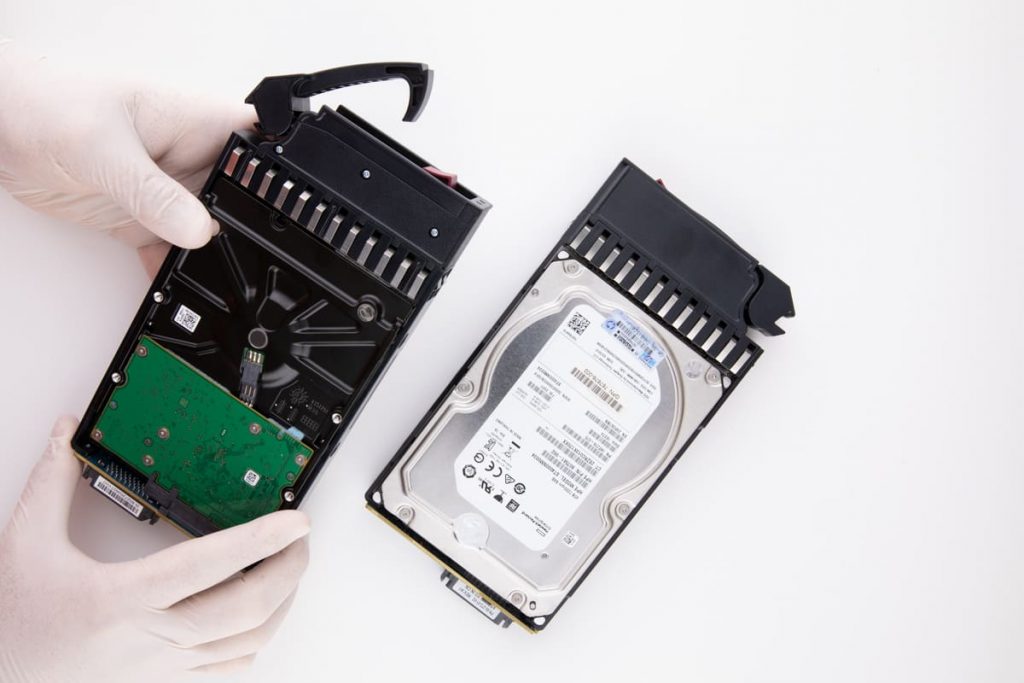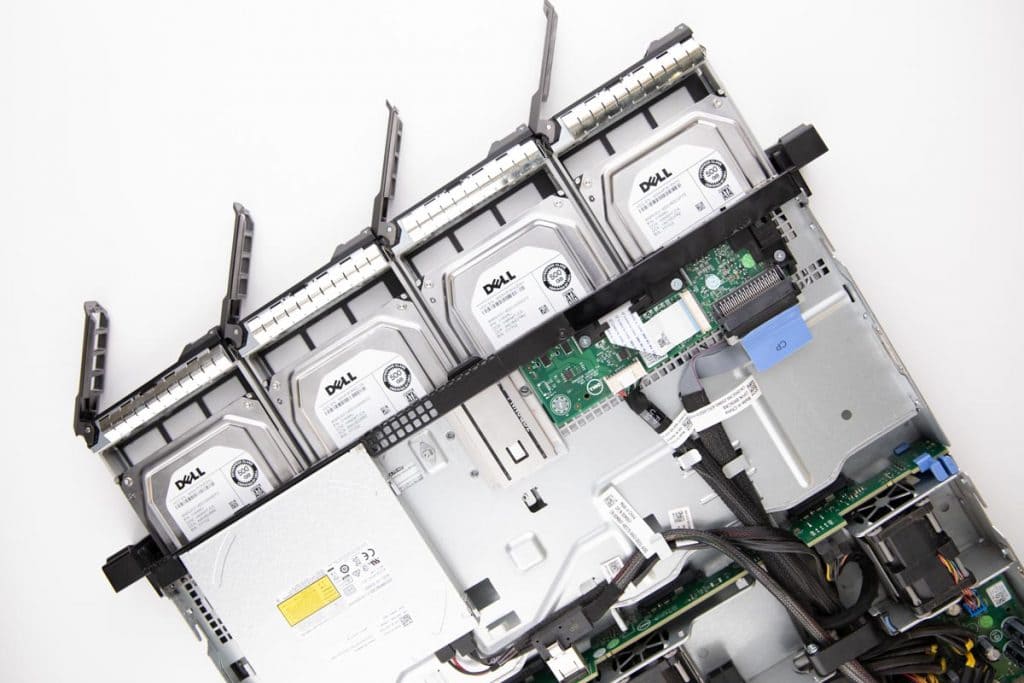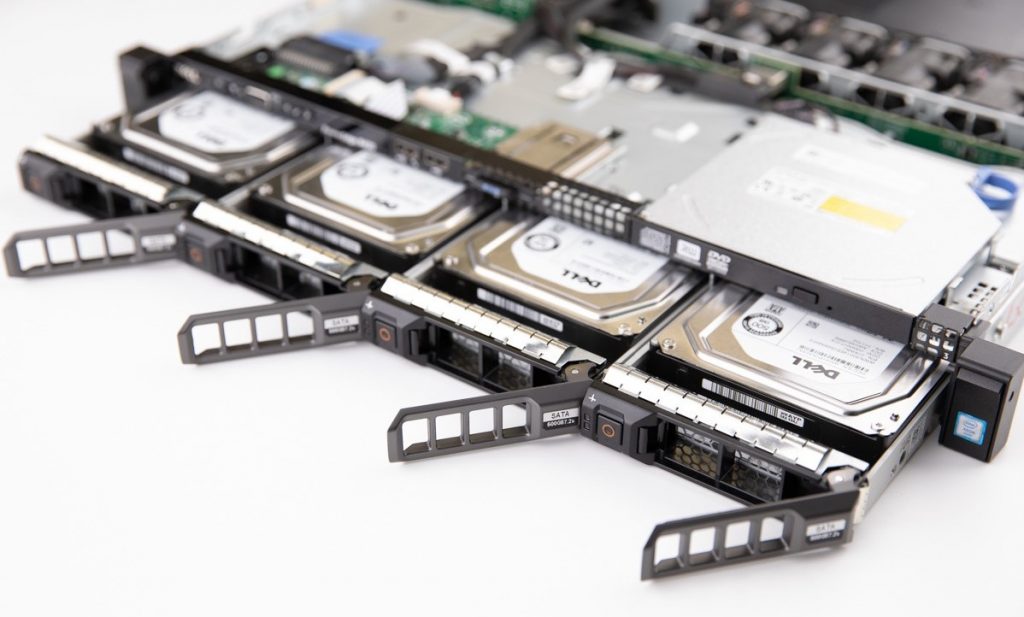RAID (Redundant Array of Independent Disks) is a technology used in computer storage to improve performance, increase storage capacity, and provide redundancy in case of disk failure. RAID is achieved by combining multiple hard drives into a single logical unit, and several RAID levels offer different configurations of redundancy, write/read performance, and capacity.
In this article, our team will discuss what RAID is, the definition of RAID levels, and the different types of RAID configurations.
What is RAID System?
RAID is a technology that combines multiple hard drives into a single logical unit, providing improved performance, increased storage space, and redundancy in case of disk drive failure. The idea behind RAID is to improve performance and availability by spreading data across multiple drives instead of relying on a single drive.
RAID uses software or hardware to group multiple hard drives into a single array. This array appears to the operating system as a large single disk. Data is written to the RAID in small pieces, called stripes, spread across the drives in the array. This allows multiple disks to work together to read\write data, providing better performance than a single drive could achieve.
RAID Levels Explained
RAID levels define the different configurations of RAID arrays, each with its own set of advantages and disadvantages. The most common RAID levels are RAID 0, RAID 1, RAID 5, and RAID 6. Let us take a closer look at these RAID types.
RAID 0
RAID 0, also known as striped volume, is the simplest RAID level, requiring at least two hard drives. Data is split across the drives in the array, providing improved performance as multiple disks work together to read and write data.
However, RAID 0 does not provide any redundancy, meaning that all data on the array is lost if one drive fails. RAID 0 is best suited for applications where performance is more important than data security, such as gaming or video editing.
RAID 1
RAID 1, also known as disk mirroring, requires at least two hard drives. Data is written to both drives simultaneously, providing redundancy if one drive fails. If one disk drive fails, the other one can continue to function, ensuring that data is still available.

Nevertheless, RAID 1 does not provide performance benefits, as data is only written to one drive at a time. RAID 1 is best suited for applications where data security is more important than performance, such as databases or financial applications.
RAID 5
RAID 5 requires at least three hard drives. Data is striped across the drives in the array, with parity data distributed across all drives.
If one drive fails, the array can rebuild the missing data using the parity data on the remaining drives.
Array RAID 5 provides both improved performance and redundancy, making it a popular choice for many applications. However, the rebuild process can impact RAID 5’s performance, which can be time-consuming for large arrays.
RAID 6
RAID 6 requires at least four hard drives. Like RAID 5, data is striped across the drives in the array, with parity data distributed across all disks.
However, RAID 6 uses two sets of parity data, providing redundancy even if two drives fail. This makes RAID 6 more resilient than RAID 5 but also more expensive to implement. RAID 6 is best suited for applications where data security is critical, such as medical or financial applications.
Different Types of RAID Configurations
In addition to the common RAID levels described above, several other configurations offer different benefits and trade-offs.
RAID 0+1
RAID 0+1, also known as RAID 01, combines RAID 0 and RAID 1. RAID 0+1 requires at least four hard drives, with a minimum of two in each set. Data is striped across two groups of mirrored drives, improving performance and redundancy.
RAID 1+0
RAID 1+0, or RAID 10, combines RAID 1 and RAID 0. Data is mirrored across two sets of striped drives, providing both improved performance and redundancy. RAID 1+0 requires at least four hard drives, with a minimum of two in each group.
RAID 50
RAID 50 combines arrays like RAID 5 and RAID 0. Data is striped across multiple RAID 5 arrays, improving performance and redundancy. RAID 50 requires at least six hard drives, with a minimum of three in each RAID 5 array.
RAID 60
RAID 60 combines arrays like RAID 6 and RAID 0. Data is striped across multiple RAID 6 arrays. RAID 60 requires at least eight hard drives, with a minimum of four in each RAID 6 array.
Best RAID Configuration for Your Needs
When choosing a RAID level, it is important to consider your specific needs in terms of data redundancy, performance, and storage capacity. Here are some features to consider when choosing a RAID level:
Performance Requirements
If your application requires high performance, then RAID 0 or RAID 10 may be the best options.
RAID 0 offers the highest performance by striping data across multiple drives, while RAID 10 offers a balance of performance and redundancy by combining both striping and mirroring.

Data Redundancy Needs
If data redundancy is a top priority, then RAID 1, RAID 5, or RAID 6 may be the best options.
RAID 1 and RAID 10 provide the highest level of redundancy by mirroring data across multiple drives.
RAID 5 and RAID 6 use parity data to protect against drive failure, with RAID 6 offering a higher level of protection by using two parity drives.
Storage Capacity Requirements
If you need to maximize your storage capacity, then RAID 5 or RAID 6 may be the best options. These RAID levels use parity data to protect against drive failure while offering a larger storage capacity than RAID 1 or 10.
Budget Constraints
Different RAID levels have various requirements in terms of the number of drives needed and, therefore, other costs. RAID 0 and RAID 1 are typically the least expensive options, while RAID 5, RAID 6, and RAID 10 require more drives and are more expensive.
Once you have considered these factors, you can choose the RAID level that best meets your needs. Here are some examples of how different scenarios might lead to other RAID-level choices:

- Small business with a limited budget
A small business with a limited budget might choose RAID 1 or RAID 5 to balance performance and redundancy needs while minimizing costs.
RAID 1 provides the highest level of redundancy with only two drives, while RAID 5 offers a larger storage capacity with three or more disks.
- High-performance gaming PC
A large enterprise with high data security needs might choose RAID 6 to provide the highest level of data redundancy with two parity drives. RAID 6 is more expensive than other RAID levels but offers the best protection against drive failure and data loss.
- Multimedia production company with large storage needs
A multimedia production company with large storage needs might choose RAID 10 to balance performance, and redundancy needs while providing a large storage capacity. RAID 10 requires a minimum of four disk drives but provides the highest level of performance and redundancy.
Choosing the right RAID level depends on your specific needs in terms of performance, data redundancy, storage capacity, and budget. By considering these features, you can choose the RAID level that best meets your needs and balances performance, redundancy, and cost.
Frequently Asked Questions
What are the most common RAID levels?
The most common RAID levels are RAID 0, RAID 1, RAID 5, and RAID 10. Each level offers a different balance of performance, storage capacity, and data protection.
What is RAID 0, and what are its advantages?
RAID 0, or striping, spreads data across multiple disks for high performance and full storage capacity utilization. However, it doesn’t offer any data redundancy.
How does RAID 1 ensure data safety?
RAID 1, known as mirroring, stores identical copies of data on two or more disks. This ensures that the data can be retrieved from another if one disk fails, providing high data redundancy and safety.
What are the different levels of RAID configuration?
There are many levels of RAID configuration, with the most common being RAID 0, RAID 1, RAID 5, and RAID 10. However, there are also more advanced levels, such as RAID 6, which adds a layer of redundancy by using two parity blocks instead of one, like in RAID 5.
Which is the best RAID configuration?
When considering setting up a RAID system, it’s important to understand that each RAID level offers distinct benefits and drawbacks. Carefully assess your needs to select the best RAID configuration for optimal performance and data protection in your storage solution.
What should I do if a disk fails in my RAID setup?
In the event of a disk failure in your RAID configuration, prompt action is crucial to prevent data loss. Depending on the RAID level, you may be able to replace the failed disk and rebuild the data using existing disks. At times, professional data recovery services may be needed.
